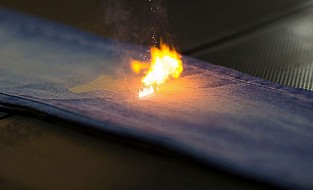
Denim will always be a staple in the fashion world and whilst the iconic name in Levi’s has grown slightly tired amongst today’s staunch competition, there’s no denying that the brand is ahead of the game when it comes to innovation.
The American company recently revealed a new digitising technique which employs lasers to achieve the perfect finish on denim in record time without the use of harmful chemicals or intensive manual labour.
Named Project FLX (Future LED Execution), the program showcases the future of mass produced jeans which consolidates a traditionally 24-step process into just 3 steps.
“Our first step in the new process is to photograph the jean, and then we take that and illustrate it in a way that the laser can interpret,” says Bart Sights, Levi’s VP in technical innovation.
“So what used to happen traditionally 8, 10, 12 minutes with manual applications, we can now execute with the laser in 90 seconds or so.”
Laser washing isn’t exactly new technology as it’s been around for a few years. Levi’s however is one of the first companies to realistically attempt to implement it across their supply chain and business model.
As seen in the video, the lasers work by using infrared light to scorch the surface of the fabric to achieve the perfect finish design. We don’t use the term ‘perfect’ lightly either. Computer aided imaging tools are first used to create patterns and finishes. This can include everything from strategically placed colour fade to tears to abrasions.
Once the prototype 3D mock-up of the jean is complete, designers send the specs through to the lasers which then do their work on the jeans. Think of it like 3D printing but for denim.
There’s also an environmental incentive for Levi’s inheriting this technology. The company is set on achieving a “zero discharge of hazardous chemicals by 2020,” and adds that this laser-based technology will help them reduce the number of chemicals used in the denim process from a few thousand to just a few dozen.
At the output end, it also benefits Levi’s as their development time will be halved from months to just weeks and possibly days.

